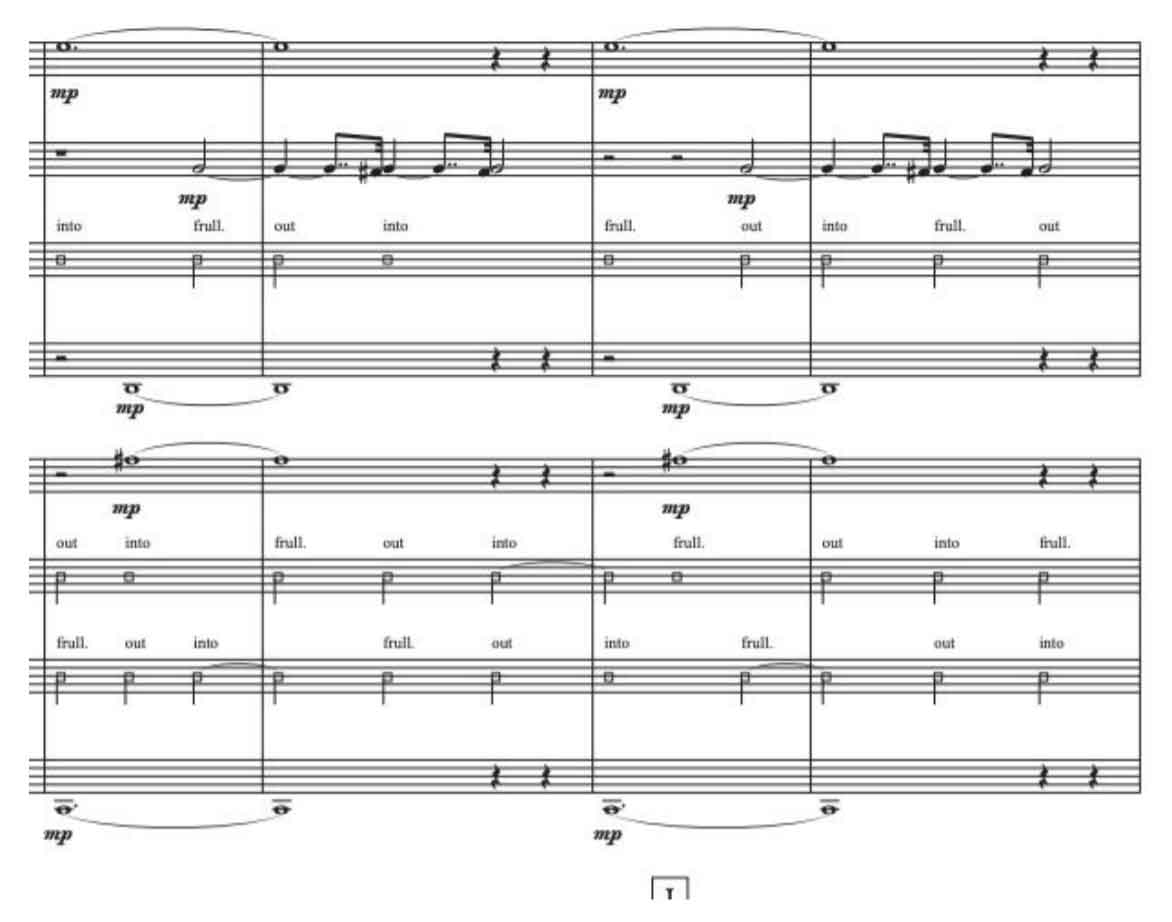An Exploration of Powerful and Unusual Saxophone Effects
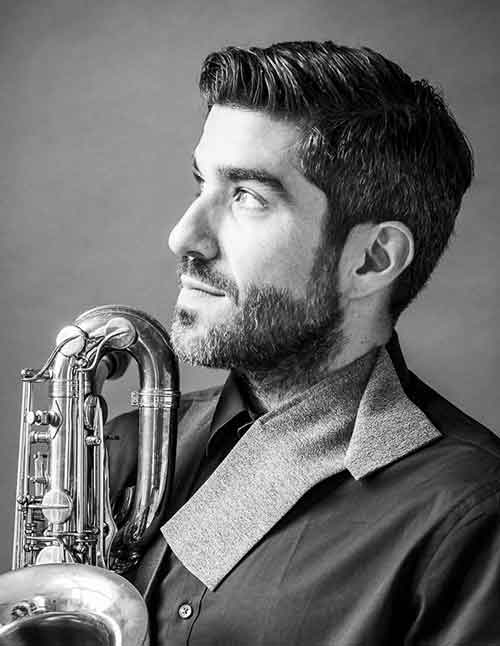 Maxim Shalygin’s Todos los Todos el Fuego (2019) is a new, nearly 90-minute long work for saxophone octet, inspired by the Argentinian writer Julio Cortazar. While there have been other original works for 8 saxophones, no work has ever combined tonal and avant garde elements with the scope and scale found in Maxim’s piece, called A mahler Symphony for 8 saxophones by the Dutch press.
Maxim Shalygin’s Todos los Todos el Fuego (2019) is a new, nearly 90-minute long work for saxophone octet, inspired by the Argentinian writer Julio Cortazar. While there have been other original works for 8 saxophones, no work has ever combined tonal and avant garde elements with the scope and scale found in Maxim’s piece, called A mahler Symphony for 8 saxophones by the Dutch press.

The piece is an intense emotional and spiritual journey for the listener, and a technical and physical challenge for the performers. Shalygin asks for a huge dynamic and tonal range, along with extreme endurance and control from all the players: all 8 parts feature delicate, pianissimo passages sitting alongside the most raw, harsh sounds. The composer combines these elements with a wide variety of extended saxophone techniques, creating a colorful and mysterious sound world.
The examples below show not just the range of the effects, but the creative ways that the composer has combined these avant garde techniques with more traditional and tonal melodies, rhythms, and harmonies. The result is a truly unique musical language and aesthetic, and an epic new work for saxophone ensemble.
CLICK HERE FOR A MORE READABLE PDF VERSION OF THE SHEET MUSIC EXAMPLES BELOW.
Morse code effect
This is a radical extended technique in which the saxophonist combines very fast, random articulations on one note (done in an unconventional up/down motion against the mouthpiece/reed) while doing a bisbigliando effect on that note. The resulting sound is rhythmic, detuned, and very penetrating, notated with a dotted line and “M”.
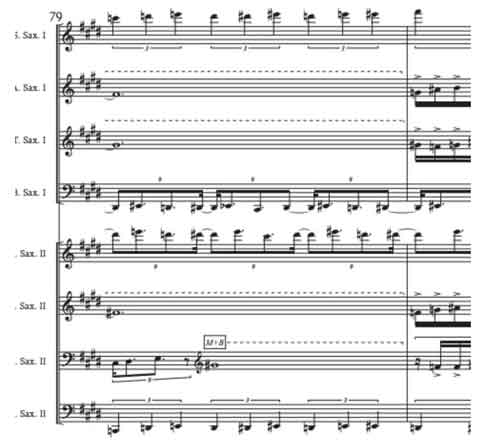
Ex. 1, “Morse Code” effect (TLTEF Mov’t II)
Microtones
The piece uses microtones (quarter-and eighth-tone) in several interesting ways, but perhaps the most unique usage is in movement VII, where a trio (alto, tenor, baritone) play a repeating, tonal (non-micotuned) chorale melody, which is progressively undermined and eventually destroyed by the intrusion of more and more detuned notes. To add to the effect, the microtones are mostly in triple rhythm whilst the chorale in duple, so the two elements also clash rhythmically as well as tonally. What is particularly noteworthy is how the listener continues to perceive the chorale melody even after it has been totally consumed by the cloud of microtones.
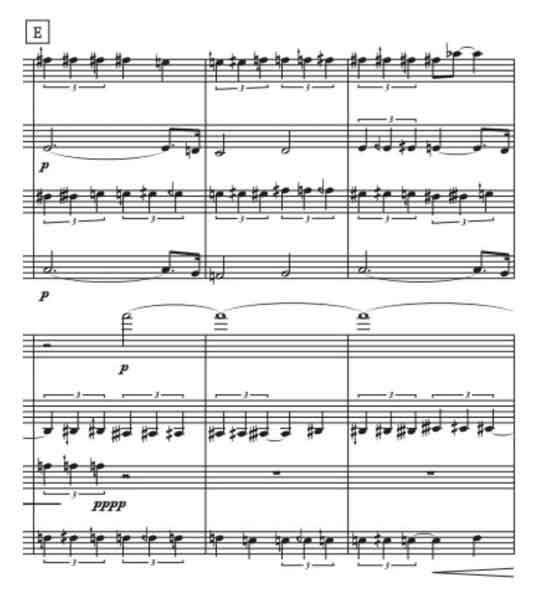
Ex. 2: Microtones + chorale melody
Speaking
At the end of movement VII, the entire ensemble eventually converges on a rhythmically notated spoken part. However, what makes the effect unique is that the players are asked to speak through the saxophones at a random but consistent pitch, while rapidly fingering different notes on the instrument. The result is a bizarre, modulated, otherworldly chorus.

Ex. 3: Speaking through the saxophone
Slap tongue percussion
In this passage sopranos and baritones provide fast melodic filigree as a backdrop while the middle and lowest voices (tenor, alto, plus bass) play contrapuntal rhythms using multiphonic fingerings and open-mouth slap. The result is highly percussive and aggressive, with a sound reminiscent of a drum choir.
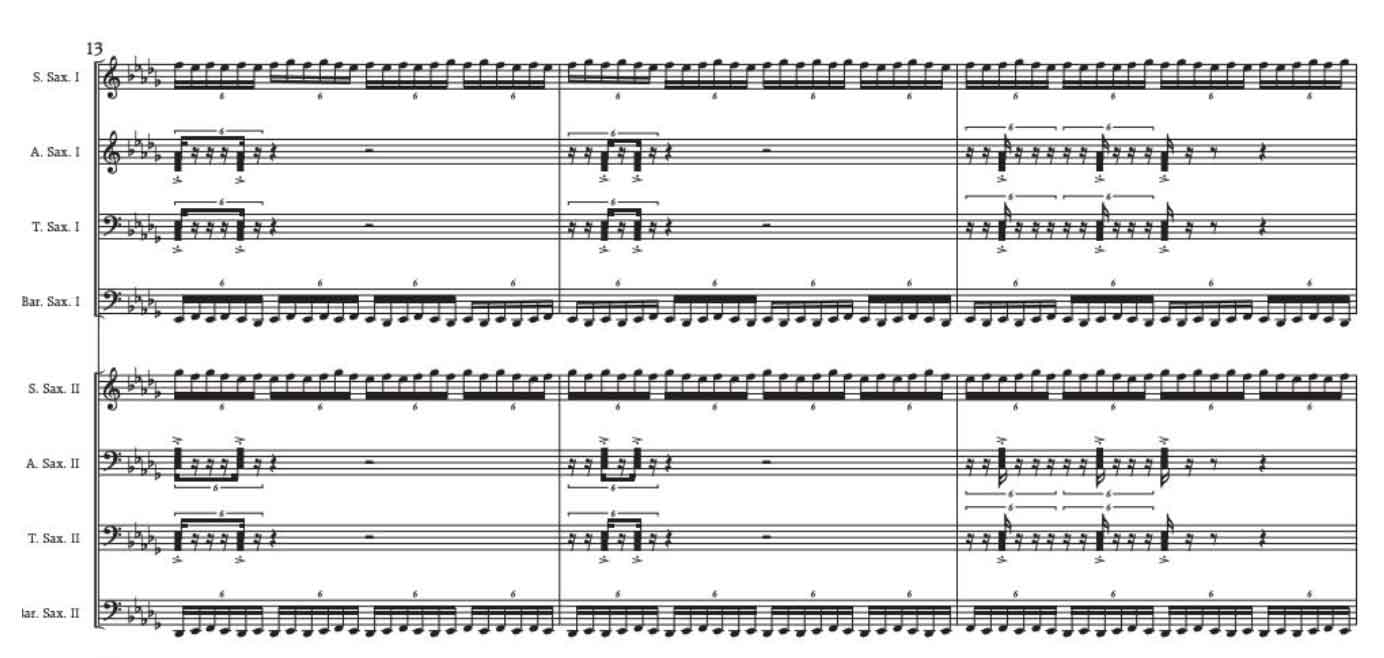
Ex. 4, Slap Percussion
’The beast’
In movement IV, the composer asks the two baritones to play fast, loud legato figures on the lowest notes (low D-Bb) while randomly voicing higher notes. The result, evoking saxophonists such as Evan Parker and Albert Ayler, was nicknamed ‘The Beast’ in rehearsals. In the score, the soprano parts are precisely notated while the baritone parts are a suggestion for fingerings and rhythms to achieve the desired effect.
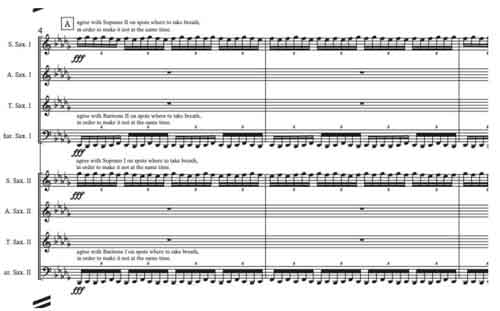
Ex. 5, The Beast
Air and flutter combinations
In movement V air sounds and flutter tongue are used extensively, always in specific combinations of flutter (“frull”), inhaling through the saxophone (“into”) and exhaling through the saxophone (“out”). While these are familiar effects to most saxophonists, the particular combinations of effects, often while keeping the pitch element relatively static, creates a very rich and detailed musical texture suggesting organic rhythms like breathing or a heartbeat.
